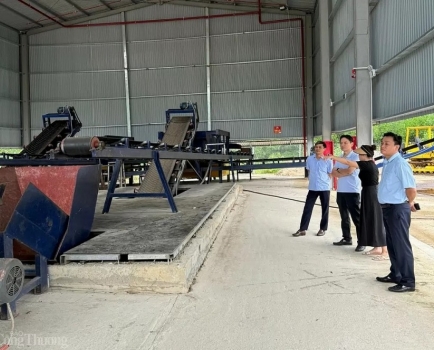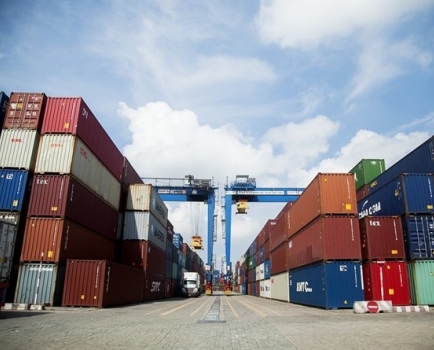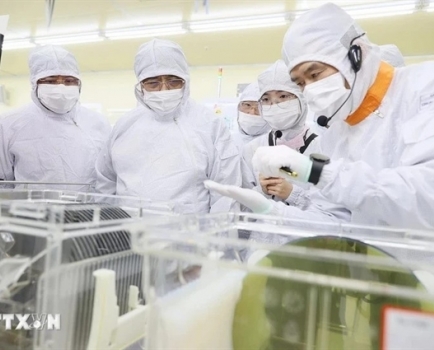Opportunities to promote export of cashew nuts to the EU
Tue, 27 Aug 2024 10:14:00 | Print | Email Share:
Although the demand for cashew nuts in the European market remains high, firms must get more involved in the cashew nuts supply chain to preserve their position.

EU’s big demand for cashew nuts
According to Tridge, Europe is the world's largest importer of cashew nut kernels, accounting for around 40% of total cashew import value in 2022. This exceeds the United States' 28.5% share. Between 2018 and 2022, European cashew nut imports climbed at an annual average rate of 6.1%. Almost all imports from outside Europe are from developing countries.
When analyzing EU consumption numbers, keep in mind that the cashew import trade is dominated by two major importers: the Netherlands and Germany. Both countries are major cashew nut consumers and transit hubs for other European destinations. Except for Belgium, the overall trend from 2018 to 2022 was one of growing perceived consumption.
Over the last five years, cashew nut consumption has grown steadily in Germany (2.8%), the United Kingdom (3.1%), France (8.5%), the Netherlands (10.7%), and Italy (13.6%), while the decrease in apparent consumption in Belgium may be due to inventory and trade variations, as the country is also a major re-exporter.
The European cashew nut market is expected to rise by 5-6% each year over the next five years. The demand for cashew nuts in Europe is high, yet import volumes fluctuate due to changeable output in the primary providing nations. Harvests and supply will continue to affect import changes, as cashew nuts have a well-established market presence and high demand.
Imports from developing nations are dominating, accounting for around 74% of total imports by European countries. Vietnam, being Europe's top cashew nut supplier, benefits from large-scale manufacturing using mechanized processing technology. The annual growth rate is calculated as the cumulative annual growth rate, or CAGR.
Cashew nuts are more expensive than most other nuts on the European market. Rising costs might have a detrimental impact on consumer behaviour, as purchasers may seek out cheaper options among other nut goods. The high price of cashews may impact demand from firms that utilize them as a component in nut mixes, breakfast mixes, and other products. When cashews are pricey, food processors may lower the amount of cashew nuts in a combination while increasing the amount of cheaper nuts. This may also have a detrimental impact on new product introductions.
Notes to businesses
Vietnam was the leading cashew nut exporter to the EU in the first four months of 2024, with around 35,390 tons worth 182.77 million euros (equal to 195.63 million USD), up 10.2% in volume but down 2.2% in value from the same time previous year.
Vietnam's cashew market share in the EU's total imports from extra-bloc markets was 71.24% of total volume and 70.66% of total revenue in the first four months of 2024, 69.09% higher than the market share by volume and 68.19% by turnover in the first four months of 2023, respectively.
However, several analysts warn that Vietnamese cashew nuts will face stiff competition in the EU market. In reality, the key raw cashew suppliers have shifted to processing cashew nuts for export, making it more difficult to get raw cashew nuts and raising competitive pressure in the industry. To sustain its competitive edge in the EU market, the Vietnamese cashew sector must focus on enhancing quality and diversifying its products through deep processing of cashew nuts.
According to the Vietnam Cashew Association, in order to increase cashew exports to the European market, enterprises must effectively control costs, increase trade promotion, diversify product portfolios, and closely check the quality of raw cashew nuts.
According to Ms. Salma Seetaroo, CEO of Cashew Coast, the Vietnam cashew business must keep up with the current green trend in order to fulfill European customers' tighter social and environmental responsibility criteria.
In May 2023, the European Commission (EC) approved the EU Deforestation Regulation (EUDR) to limit the danger of items in the supply chain linked to deforestation and forest degradation in EU imports and exports, hence raising demand for legally produced, non-deforestation products.
"Vietnamese firms must guarantee compliance with origin and food safety rules. Food safety certification, combined with corporate social responsibility (CSR) standards, can provide significant benefits to exporters from developing countries such as Vietnam," added Ms. Seetaroo, suggesting that Vietnamese businesses collaborate with European traders to participate in research activities demonstrating the benefits of using cashew nuts.
"A clear and easy-to-understand health message is critical to helping European consumers improve their cashew intake in their diet," Ms Seetaro stated.
|
Food contaminants are undesirable and hazardous chemicals in food that can cause sickness. The EU has severe limit s on pollutants in food, particularly aflatoxins, under Regulation (EU) 2023/915 on maximum levels of certain contaminants in food. This regulation came into effect on May 25, 2023. Annex I lists the maximum permissible amounts of controlled pollutants. Furthermore, fungus can develop aflatoxins on cashew nuts in the field or during storage, particularly in warm temperatures and high humidity. Aflatoxins are persistent chemicals that are not removed by the roasting or heating of nuts, therefore, cashew-based goods may include them. Additionally, the European Union has established maximum residual limit s (MRLs) for pesticides in and on food items. The European Union releases a list of pesticides that have been approved for use in the EU on a regular basis. The list is periodically updated. In 2022, the European Commission issued 27 new implementing rules, which altered this list through fresh approvals, extensions, renewals, revisions, or limit s. According to Regulation (EU) 2023/915, the maximum cadmium level for cashew nuts (and all other tree nuts except pine nuts) is 0.20 mg/kg of wet weight. The limit levels do not apply to nuts crushed and oil refined, as long as the residual pressed tree nuts are not sold as food. The presence of extremely low levels of salmonella and E. coli in ready-to-eat or processed foods, such as cashews, is a leading source of foodborne disease. Tree nut processors should include salmonella and E. coli as important public health threats in their hazard analysis and critical control point (HACCP) strategies. |
By: BUSINESS FORUM MAGAZINE
Source: https://en.diendandoanhnghiep.vn/opportunities-to-promote-export-of-cashew-nuts-to-the-eu-n40893.html
---------------------------------------------
Same category News :













